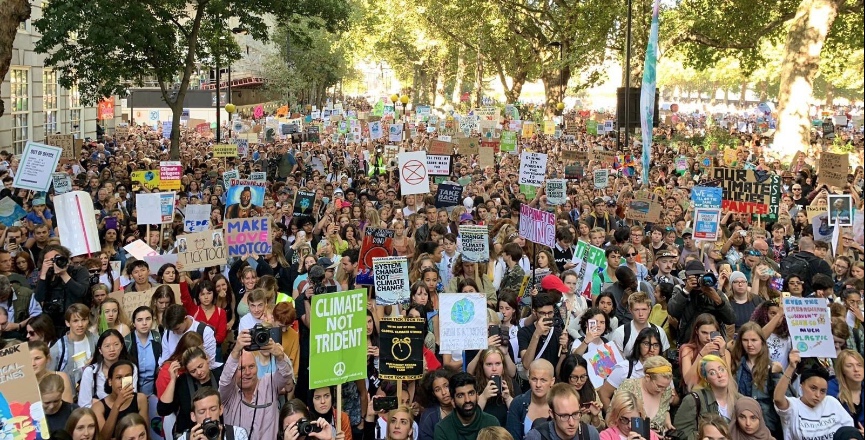While young people in Canada are taking part in the global climate strike, some of my baby boomer generation are, however timidly, expressing solidarity and support. But a good many others are at best bemused and indifferent; at worst, openly hostile to the anguish and anger of the young.
I know fellow baby boomers who take comfort in the fact that, in the aggregate, Canada, only contributes two per cent of the world’s greenhouse gas emissions.
We are only 38 million, they say. We might be wealthy enough to be included in the G7, but we are only a medium-size country. What we contribute to global warming has got to be tiny, compared to much larger countries, such as the U.S., China, India, Russia and Germany.
Those are, indeed, comforting thoughts for those among us who want to get back into their SUVs and book this coming winter’s flights to a sunny destination.
But before we wallow too happily in our complacency, consider this: Although by population we rank 39th, when it comes to total emissions we are ninth in the world.
Canada’s total carbon dioxide emissions for 2016 were 541 million tonnes. That was more than Indonesia’s, which has eight times our population, or Brazil’s with more than five times our population.
And even if we only compare ourselves to fellow affluent G7 countries, in 2016, Canada emitted 170 million tonnes more than the U.K., in excess of 200 million tonnes more than Italy, and 250 million tonnes more than France.
Things get even worse for Canada when you consider per capita emissions.
As a country, we in Canada emit 14.9 million tonnes of carbon dioxide per person. The per capita figure for Japan is 9 million tonnes, for Germany 8.9 million tonnes, and for France it is less than a third of ours, 4.5 million tonnes.
When it comes to per capita emissions, only three countries exceed ours: Australia, Saudi Arabia and the U.S.
Yes, we are a big country, with vast distances and a cold climate. That, at least, is the argument some make to defend our embarrassingly high rate of emissions.
But that notion of bigness is deceptive. We are, in truth, one of the most urbanized countries on earth. We may have a vast territory, but most of us live in large, often sprawling, urban agglomerations, within hailing distance of our southern border.
The fact is that, by and large, we do not plan our towns and cities, or our urban transit, or our agriculture, or our lifestyles to minimize our consumption of greenhouse gas producing energy.
We overheat in the winter and maniacally use air conditioning in the summer. And we design our urban spaces in such a way that, for a huge number of us, every little task in life — from buying a litre of milk to availing ourselves of medical services to getting to our jobs — requires the use of the private automobile.
There are vast regions of Canada’s urban landscape where it is, literally, dangerous to walk. If you were to try to get somewhere on foot you would have to navigate streets that are, in reality, virtual highways — long, dark, lonely stretches of road that make no provision for pedestrians, or, for that matter, cyclists.
It is also true, of course, that we have a large and economically important industry devoted to exploiting fossil fuel. And much of that fuel is extremely difficult to extract, locked as it is in the inhospitable environment of the tar sands. To get at our reserves of oil and gas, a good part of our industry must produce massive volumes of emissions.
And so, on the one hand, our way of life means that we casually and heedlessly produce far more emissions than most similar countries, while, on the other, our continued prosperity is tied up in the powerful industry which extracts and sells the fuel that creates the emissions.
No wonder a good many more mature Canadians will keep their distance while the young try to convince us to consider a future beyond the current fiscal year.
Karl Nerenberg has been a journalist and filmmaker for more than 25 years. He is rabble’s politics reporter.



